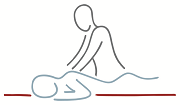Your skin is your largest and heaviest organ and has a surface area of between 1.5 and 2m square. It is soft and flexible and performs a number of very important functions. These include Protection from the outside environment, Thermal regulation, Detection of sensation and Preventing Infection.
It is made up of three layers –
• The Epidermis is the outermost layer of skin and provides our first line of defence against the outside world. It is waterproof and is continuously renewing itself. It also helps regulate body temperature and gathers sensory information from the surrounding environment. The thickness of the Epidermis is determined by where it is located on the body and the role it is required to play. The thinnest layer is on the eyelids and the thickest on the soles of our feet. This layer also contains the cells that produce Melanin. This pigment determines our skin colour and protects us from the effects of the sun’s UV radiation. Vitamin D can be produced in the lowest layers of the Epidermis when we are exposed to sunlight.
• The middle layer, the Dermis contains tough connective tissue, hair follicles, and sweat glands. It also contains blood capillaries and nerve endings. This layer also varies in thickness depending on location. Sensors in this layer transmit the sensations of touch, pressure and pain. These sensors help to protect us from wounds and burning. This layer is the most important part of our thermal regulation system. Cooling us through sweat production and relaxing of blood vessels when we are hot and contracting blood vessels when we need to conserve heat.
• The deeper Hypodermis is made of fat and connective tissue. This layer acts as a cushion when we fall and also contains larger blood vessels and nerves. Cells known as Fibroblasts and Macrophages live in this layer. Fibroblasts make Collagen which is necessary for wound healing and Macrophages are part of our immune system keeping the body free of harmful intruders. This layer connects the upper skin layers to underlying structure such as bones and cartilage.
The thickness of the hypodermis varies in different regions of the body and can vary considerably between different people. In men, the hypodermis is thickest in the abdomen and shoulders, whereas in women it is thickest in the hips, thighs, and buttocks.
If you have any questions about how I may be able to help with your scars, please don’t hesitate to get in touch for a no-obligation chat.

